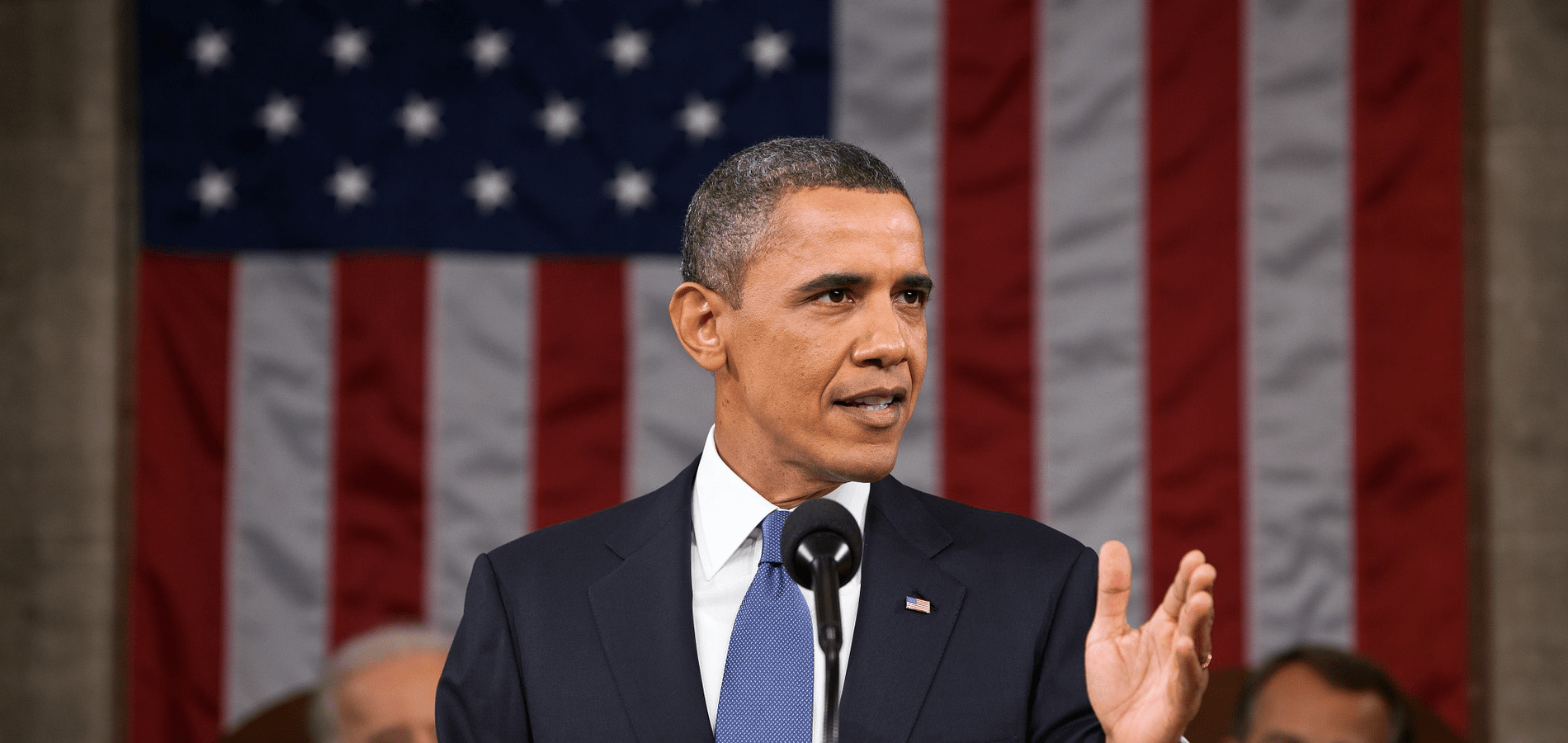Archives
Polls: What Today’s Surveys Reveal About Public Opinion

Polls today are more than just a snapshot of public opinion; they’re windows into the collective psyche of society. From political elections to social issues, surveys capture what people think, feel, and believe at any given moment. But have you ever wondered how these polls come together? What do they tell us about ourselves?
In an era where information travels faster than ever before, understanding the art and science behind polling is essential. Let’s dive deep into the fascinating world of surveys—exploring their historical significance, methods used for data collection, and the challenges faced in accurately reflecting public sentiment. With each statistic comes a story—let’s uncover what those stories reveal about us today.
Historical Significance of Polls
Polls have played a pivotal role in shaping political landscapes throughout history. Their origins can be traced back to the early 20th century when methods for gauging public opinion began to evolve.
The famous Literary Digest poll of 1936, however, marked a turning point. It famously predicted a landslide victory for Alf Landon over Franklin D. Roosevelt, which completely missed the mark. This failure highlighted crucial flaws in sampling techniques and set the stage for more robust methodologies.
As technology advanced, so did polling tactics. The introduction of telephone surveys and later online polls transformed how data was collected and analyzed. These innovations allowed for quicker responses and broader reach.
Polling has not only influenced elections but also provided insight into social issues like civil rights, healthcare, and education reform over decades. Understanding historical significance helps us appreciate the complexities involved in measuring public sentiment today.
The Methods of Conducting Surveys
Surveys can be conducted in various ways, each with its unique strengths and weaknesses. Traditional methods like telephone interviews have long been a staple. They allow for real-time interaction but may miss younger demographics who favor text or online communication.
Online surveys are rapidly gaining popularity. They provide convenience and scalability, reaching a global audience within minutes. However, response rates can vary dramatically across different platforms.
Face-to-face surveys offer rich qualitative data but require more time and resources to execute. Interviewers can gauge body language and emotional responses, adding depth to the findings.
Mail-in questionnaires still exist despite their decline in usage. While they may seem outdated, some populations prefer this method due to privacy concerns or limited internet access.
Each technique needs careful consideration based on target demographics and research goals. The choice of method directly influences the reliability of public opinion captured by polls today.
Challenges in Accurately Representing Public Opinion
Accurately capturing public opinion is far from straightforward. One significant challenge lies in the diversity of voices. Different demographics often hold varying perspectives, making it difficult to represent a unified view.
Sampling bias can skew results as well. When certain groups are underrepresented, the data may misrepresent the broader population’s sentiment. This creates gaps in understanding and leads to flawed conclusions.
Moreover, respondent fatigue plays a role. People might rush through surveys or provide socially desirable answers rather than their true feelings. This undermines the authenticity of responses.
Time constraints also limit how questions are framed and understood by participants. The complexity of an issue cannot always be captured in simple survey formats, leading to oversimplified interpretations of nuanced opinions.
Rapid changes in public sentiment complicate matters further—what people feel today might not reflect their views tomorrow.
Controversies Surrounding Polls
Polls today often spark heated debates. Critics argue that many polls are biased, leading to skewed results. The selection of participants plays a crucial role in shaping opinions.
Another point of contention is the timing of surveys. Conducting polls during key events can significantly influence public perception. Responses may reflect immediate emotions rather than well-considered views.
Moreover, some question the reliability of online polling methods. With the rise of mobile devices and social media, reaching diverse demographics has become both easier and more challenging.
Media outlets sometimes amplify selected findings without providing context, which can misinform audiences about prevalent opinions. This selective reporting fuels distrust in polling data.
As technology evolves, so do techniques used by pollsters. While innovation offers new insights, it also raises concerns about privacy and transparency in how data is collected and analyzed.
Impact of Social Media on Polling
Social media has transformed the way we approach polls today. Platforms like Twitter, Facebook, and Instagram allow for instant feedback from a vast audience. This immediacy offers insights that traditional polling methods simply can’t match.
However, it also raises questions about accuracy. The demographic skew of social media users often means certain voices dominate the conversation. Polls conducted online may reflect trends among younger audiences while neglecting older populations who aren’t as active on these platforms.
Moreover, algorithms influence what people see and engage with. Echo chambers can distort public opinion by amplifying specific viewpoints while muting others.
Despite these challenges, social media remains an invaluable tool for gauging sentiment in real-time. It provides a dynamic landscape where opinions evolve rapidly and responses are spontaneous—qualities that enrich our understanding of public attitudes today.
Ethical Considerations for Polling
Ethics play a crucial role in the world of polling. With the ability to shape public perception, pollsters carry a significant responsibility. Transparency is essential; respondents should know how their data will be used.
Informed consent is another vital aspect. Participants must willingly engage without coercion. Ensuring that questions are unbiased and neutrally framed helps maintain integrity in results.
Confidentiality cannot be overlooked either. Protecting personal information builds trust between researchers and participants, fostering a more accurate representation of public opinion.
Moreover, it’s important to consider inclusivity. Polls should represent diverse demographics to capture varying perspectives accurately.
Ethical polling practices contribute to societal understanding and discourse while minimizing harm or manipulation of data for ulterior motives. The commitment to these principles ultimately strengthens the credibility of polls today.
Case Studies: Key Findings from Recent Polls
Recent polls have uncovered fascinating shifts in public opinion across various issues. One notable survey focused on climate change, revealing that a significant majority of respondents now prioritize environmental policies over economic growth. This marks a shift from previous years where economic concerns often overshadowed ecological ones.
Another interesting finding emerged from polls regarding remote work preferences post-pandemic. A recent study showed that 70% of workers prefer a hybrid model, blending both home and office environments. This reflects changing attitudes towards flexibility in the workplace and challenges traditional corporate structures.
Polling data also highlighted growing support for mental health initiatives among younger demographics. Many young adults express that access to mental health resources is as critical as physical health care, indicating an evolving understanding of wellness.
These insights showcase how current events shape public sentiment, providing valuable information for policymakers and businesses alike.
Future of Polling and Its Role in Society
The future of polling is evolving rapidly. As technology advances, so too do the methods used to gauge public opinion. Digital platforms are becoming integral in shaping how surveys are conducted and analyzed.
Mobile apps and social media provide immediate feedback from diverse demographics. This can lead to faster insights but also introduces challenges related to data accuracy and representation.
Additionally, artificial intelligence is playing a pivotal role. It enhances data analysis, allowing for more nuanced interpretations of public sentiment.
As society becomes increasingly polarized, understanding these trends through polls today is crucial. They can help bridge gaps between differing viewpoints and foster dialogue among communities.
Moreover, transparency in methodologies will be paramount moving forward. The public’s trust depends on knowing how results are gathered and interpreted in an age where misinformation runs rampant.
Embracing innovation while maintaining ethical standards will define the next chapter of polling in our interconnected world.
Conclusion
Polls today serve as a vital lens through which we can view the pulse of society. They capture sentiments, preferences, and beliefs in an ever-evolving landscape. As technology advances and methods refine, polls will continue to play a crucial role in shaping public discourse.
While challenges remain—such as biases in sampling or the influence of social media—the insights gleaned from surveys can help us understand complex issues. Ethical considerations are paramount; ensuring accuracy and fairness builds trust between pollsters and the public.
As we move forward, staying attuned to how polling evolves will be essential. Whether used for political campaigns or gauging societal trends, polls today reflect not just numbers but narratives that shape our collective future. The journey of understanding public opinion is ongoing—and polls remain at its heart.
Archives
Pinterest : Understanding Your Audience and Performance

Pinterest is more than just a platform for sharing beautiful images and clever DIY projects. It’s a vibrant visual search engine that connects ideas with inspiration, making it an essential tool for businesses and creators alike. With over 450 million active users each month, understanding how to engage this audience is crucial for standing out in the crowded digital landscape.
But here’s the catch: simply pinning pretty pictures isn’t enough. To truly succeed on Pinterest, you need to know who your audience is and what they’re looking for. This knowledge can help you create content that resonates deeply and drives engagement.
As we explore the nuances of Pinterest today, we’ll uncover strategies to not only understand your audience but also track your performance effectively. Whether you’re a seasoned marketer or just starting out on this visually-driven platform, knowing how to tailor your approach can make all the difference in achieving success on Pinterest.
The Importance of Understanding Your Audience on Pinterest
Understanding your audience on Pinterest is crucial for any brand or creator. This platform thrives on visuals, and knowing who you’re speaking to can shape your content strategy effectively.
Tailoring your pins to fit the interests and preferences of your audience increases engagement. When users see content that resonates with them, they are more likely to save it and share it.
Pinterest serves as a discovery tool, where users seek inspiration for their everyday lives. By understanding what drives their curiosity, brands can create meaningful connections through targeted boards and pin designs.
Audience insights also help in honing messaging strategies. Knowing demographics such as age groups, location, and interests allows you to craft relatable narratives that speak directly to potential followers.
The landscape of Pinterest continually evolves. Keeping an ear to the ground about user behavior ensures you remain relevant amidst shifting trends.
How to Identify and Analyze Your Audience on Pinterest
To identify and analyze your audience on Pinterest, start by digging into the platform’s built-in analytics. This tool provides insights into who interacts with your pins. Look for demographic details like age, gender, and location. Understanding these factors helps tailor your content effectively.
Next, explore the interests of your followers. Check which boards they engage with most frequently. Are they drawn to DIY projects or fashion trends? Knowing their preferences allows you to create relevant content that resonates.
Also consider using Pinterest’s search feature. Type in keywords related to your niche and examine the suggested searches that pop up. These suggestions reflect what users are actively seeking, guiding your strategies.
Don’t overlook engagement metrics such as repins and likes. High engagement indicates successful connections with your audience while low numbers might suggest a need for reevaluation of strategy or visuals used in posts.
Utilizing Analytics for Performance Tracking
To truly succeed on Pinterest, you need to dive deep into analytics. This tool is your compass, guiding you through the vast ocean of content and engagement.
Start by setting clear goals. Are you looking for increased brand awareness or driving traffic to your site? Your objectives will shape how you interpret data.
Look at key metrics like impressions, saves, and clicks. Each tells a story about what resonates with your audience. Understanding these numbers can reveal trends that spark new content ideas.
Don’t forget about audience demographics too. Knowing who engages with your pins can help tailor future posts specifically for them.
Regularly checking analytics keeps your strategy agile. Adaptability ensures you’re not just keeping up but thriving in the ever-changing landscape of Pinterest marketing.
Tips for Targeting Your Ideal Audience on Pinterest
To effectively target your ideal audience on Pinterest, start by crafting engaging and visually appealing pins. Use high-quality images that resonate with your brand’s identity.
Research popular keywords related to your niche. Incorporate these into your pin descriptions, making them more discoverable to users searching for similar content.
Create boards that reflect specific themes or interests relevant to your audience. This helps organize your content and makes it easier for followers to navigate.
Engagement is crucial. Participate in group boards where like-minded users share their ideas. This expands reach and connects you with potential followers who are genuinely interested in what you offer.
Consider seasonal trends. Tailor some of your content around holidays or significant events when interest peaks to capture attention at the right moment.
The Power of Visuals on Pinterest
Visuals are at the heart of Pinterest. This platform thrives on eye-catching images that tell a story or inspire creativity. Users scroll through endless pins, seeking ideas for their next project or dream vacation.
High-quality visuals can turn casual browsers into enthusiastic pinners. A stunning image grabs attention instantly and encourages engagement. Colors, composition, and clarity play crucial roles in making your content stand out.
Moreover, vertical images perform better than horizontal ones on this platform due to the way users interact with their feeds. Infographics also hold significant power; they not only inform but engage users who want quick insights without extensive reading.
Don’t underestimate the impact of video content either. Short clips can convey messages effectively while holding viewers’ attention longer than static images might achieve alone. The right visual strategy can elevate your presence and boost interaction rates significantly on Pinterest.
Conclusion: Leveraging Your Audience and Performance on Pinterest for Success
Understanding your audience on Pinterest is essential for maximizing engagement and boosting performance. By identifying who your target demographic is, you can create tailored content that resonates with them. Utilize the analytics tools available to track how well your pins are performing. This data will guide you in refining your strategy.
Remember, visuals play a crucial role on Pinterest. High-quality images and engaging graphics attract users’ attention and encourage saves and shares. When combined with insights about what appeals to your audience, you’re setting yourself up for success.
By leveraging both audience knowledge and performance metrics, you can enhance your presence on Pinterest significantly. With consistent effort and strategic planning, you’ll find yourself not just participating in this vibrant platform but truly thriving within it.
Archives
Obama: The Man Behind the Message of Hope and Change

Barack Obama, the 44th President of the United States, is a name that resonates with many. He rose from humble beginnings to become one of the most iconic leaders in modern history. Elected in 2008 amid economic turmoil and social unrest, Obama captured hearts and minds with his powerful message of hope and change. His presidency was marked by groundbreaking policies, inspiring speeches, and a vision for a better America.
But what set Obama apart was not just his political acumen; it was his ability to connect with people on a personal level. His story reflects resilience and determination—qualities that have inspired millions around the world. As we delve deeper into Obama’s journey, we’ll explore how he crafted his message of hope and change against all odds, leaving an indelible mark on American politics and society that continues to resonate today.
The Message of Hope and Change
Barack Obama’s mantra of “Hope and Change” resonated deeply with many. It was more than a slogan; it became an emotional rallying cry for millions seeking progress.
This message promised a better future, one where every American could envision their aspirations becoming reality. It tapped into the collective desire for unity, healing divisions that plagued the nation.
In his speeches, Obama painted vivid pictures of possibility. He spoke to young people eager for involvement and to communities yearning for recognition. His words ignited passion and inspired action.
“Hope” conveyed optimism in uncertain times, while “Change” symbolized the drive to challenge the status quo. Together, they formed a powerful narrative that captivated voters across demographics.
These themes were woven throughout his campaigns and presidency. They offered a vision that emphasized inclusivity and resilience against adversity—a stark contrast to past political atmospheres filled with cynicism.
How Obama’s background and experiences shaped his message
Barack Obama’s journey to the presidency was anything but ordinary. Born in Hawaii to a diverse background, he grew up surrounded by cultures that shaped his worldview. His early life experiences instilled in him a profound understanding of struggle and resilience.
His time as a community organizer on Chicago’s South Side revealed the challenges faced by marginalized communities. This grassroots work ignited his passion for social justice and equity.
Obama’s education further influenced his message. Studying at Columbia University and Harvard Law School exposed him to various political philosophies, reinforcing his belief in democracy’s power.
The blend of personal history and professional experience enabled him to connect deeply with Americans from all walks of life. Every speech echoed themes rooted in hope—his authentic connection making them resonate far beyond typical political rhetoric.
Key moments in Obama’s presidency that reflected the message of hope and change
One pivotal moment came with the passing of the Affordable Care Act in 2010. This landmark legislation aimed to provide healthcare access to millions of uninsured Americans, embodying Obama’s vision for a healthier nation.
Another significant event was his response to the economic crisis. The American Recovery and Reinvestment Act showcased his commitment to revitalizing the economy while emphasizing job creation and infrastructure development.
In 2011, when Obama announced the death of Osama bin Laden, it symbolized resilience and justice for many Americans. It reinforced belief in national security under his leadership.
Moreover, embracing LGBTQ+ rights marked another milestone—culminating in support for same-sex marriage during his second term. Each step reflected an evolving society striving toward equality and acceptance.
These moments collectively illustrated Obama’s dedication to fostering hope within a diverse nation facing various challenges.
Criticisms and challenges faced by Obama during his presidency
Barack Obama faced considerable opposition throughout his presidency. The economic crisis he inherited was daunting, and many criticized the slow recovery. Critics argued that his policies didn’t go far enough to curb unemployment or stimulate growth.
Healthcare reform also sparked heated debates. The Affordable Care Act aimed to expand coverage but met fierce backlash. Many viewed it as an overreach of government power.
Foreign policy issues posed additional challenges. Decisions regarding military interventions in Syria and Libya drew scrutiny from both sides of the aisle. Some felt he was too passive, while others thought he acted impulsively.
Racial tensions intensified during his administration, culminating in protests across the nation. This highlighted divisions that many believed were exacerbated rather than healed during his time in office.
These obstacles shaped Obama’s presidency, forcing him to navigate a complex political landscape filled with dissenting voices and formidable hurdles.
Legacy and impact of Obama’s message on American politics and society
Barack Obama’s presidency marked a pivotal shift in American politics. His message of hope and change resonated deeply with millions, inspiring a generation to engage in civic life.
The Affordable Care Act transformed healthcare access, highlighting the importance of compassion in policy-making. For many Americans, this was not just legislation; it symbolized opportunity.
Obama’s emphasis on inclusivity influenced movements for social justice and equality. His presence encouraged discussions about race, gender, and sexuality that continue to shape societal norms today.
Moreover, his ability to connect through technology changed political communication forever. Social media became a powerful tool under his leadership, setting the stage for future campaigns.
Even after leaving office, Obama’s words remain relevant. They serve as motivation for activists fighting against injustices everywhere. The legacy he crafted endures as both an inspiration and a challenge to pursue progress relentlessly across America.
Conclusion: Obama’s lasting influence on the message of hope and change
Barack Obama’s tenure reshaped the landscape of American politics and infused a sense of optimism across various demographics. His message of hope and change resonated deeply, encouraging individuals to aspire for something greater than themselves.
Through grassroots organizing, he cultivated a movement that transcended traditional political boundaries. He inspired millions by emphasizing unity over division and possibility over despair. The chants of “Yes We Can” became synonymous with his leadership style—an affirmation that collective effort could bring about real change.
Even after leaving office, Obama’s influence continues to permeate discussions around social justice, healthcare reform, and climate action. His emphasis on inclusivity has paved the way for future leaders who champion similar values.
The legacy he leaves behind is not just in policies or legislation but in the hearts and minds of those who believed they could make a difference. The narrative he crafted serves as both an inspiration and a clarion call for continued progress toward equality and opportunity for all.
Obama remains an enduring symbol—a reminder that hope can drive transformative change in society when fueled by courage, compassion, and collaboration.
Archives
Sean Combs: A Philanthropist’s Impact on Communities and Culture

Sean Combs, known to many as Diddy or Puff Daddy, is more than just a music mogul. He has carved out an impressive legacy not only in the entertainment industry but also as a philanthropist dedicated to creating positive change in communities. From his early years hustling on the streets of Harlem to becoming a global icon, Sean’s journey is nothing short of inspiring. His impact extends far beyond chart-topping hits and award-winning productions; it reaches into the heart of social issues that affect countless lives today. Join us as we dive deeper into Sean Combs’ transformative work and explore how he continues to shape culture while uplifting those around him.
The Early Years: From Music to Philanthropy
Sean Combs, known to many as Diddy or Puff Daddy, first made his mark in the music industry. His journey began in the early 1990s when he worked as an intern at Uptown Records. This experience ignited a passion for creating and promoting urban music.
With sheer determination, Combs launched Bad Boy Records in 1993. He quickly became a driving force behind major hits from artists like The Notorious B.
I.
G., Mary J. Blige, and Faith Evans. His innovative approach reshaped hip-hop and pop culture.
Yet amid this success, Sean’s heart remained connected to his roots. Growing up in Harlem exposed him to both struggle and resilience. These experiences laid the groundwork for his philanthropic endeavors later on.
From the very start of his career, it was clear that Combs possessed a deep desire to uplift those around him while navigating fame’s complexities.
The Creation of the Sean Combs Foundation
The Sean Combs Foundation emerged as a beacon of hope in 1999. Its mission was clear: to uplift and empower underprivileged communities.
Founded by the iconic Sean Combs, also known as Diddy, the organization reflects his commitment to social justice and community improvement. The foundation focuses on education, arts, and health initiatives.
Diddy’s vision goes beyond mere donations. He aims to create sustainable change that benefits future generations. Programs launched through the foundation provide scholarships for young students aspiring to higher education.
Moreover, it supports various charitable efforts addressing pressing issues like hunger and homelessness. By partnering with local organizations, the foundation amplifies its impact within communities in need.
Through this endeavor, Sean Combs channels his success into meaningful contributions that resonate deeply with those he serves. Each initiative underscores his belief in giving back while inspiring others to do the same.
Impact on Communities and Causes Supported
Sean Combs has made significant contributions that resonate deeply within various communities. Through his philanthropic efforts, he addresses pressing social issues and uplifts marginalized voices.
His support extends to food distribution programs, disaster relief initiatives, and mental health awareness campaigns. These actions reflect a genuine commitment to improving lives.
Combs also champions artistic expression by funding grants for emerging artists in underserved neighborhoods. This not only nurtures talent but fosters cultural pride among youth.
Local schools benefit from his donations aimed at enhancing educational resources. By providing scholarships and mentorship opportunities, he empowers the next generation of leaders.
Whether it’s through direct aid or fostering creativity, Sean Combs consistently demonstrates how celebrity influence can drive meaningful change across diverse causes.
Advancing Education and Empowering Youth
Sean Combs has always believed in the power of education. He understands that knowledge is a key driver for change, especially among young people.
Through various initiatives and programs, he aims to break down barriers that hinder access to quality education. His commitment shines through in scholarships and mentorship opportunities geared toward underprivileged youth.
The Sean Combs Foundation places a strong focus on fostering leadership skills. Workshops, seminars, and hands-on experiences prepare students for future challenges.
Beyond academics, Diddy encourages creativity and self-expression. Music and arts programs are essential components of his efforts. They help nurture talent while instilling confidence in young minds.
By investing time and resources into these areas, he empowers the next generation to dream bigger. This legacy not only transforms lives but also inspires others to take action in their communities.
Diddy’s Influence on Pop Culture and Social Change
Sean Combs, known to many as Diddy, has been a transformative force in pop culture since the 1990s. His music not only defined an era but also set trends that resonate today.
Through his artistry, he highlighted social issues and gave voice to marginalized communities. Tracks like “Keep Your Head Up” inspired listeners to rise above adversity.
Diddy’s influence extends beyond music; he has shaped fashion and lifestyle through ventures like Sean John. This brand challenged norms and redefined hip-hop style.
His presence on social media further amplifies his message of empowerment. He connects with millions, advocating for change while promoting unity among diverse groups.
By collaborating with various artists across genres, Diddy bridges gaps between cultures. His commitment to uplifting others solidifies his role as both an artist and a catalyst for social progress in our society.
Criticisms and Controversies
Sean Combs has not escaped scrutiny throughout his career. Critics often highlight his business practices and public persona as areas of concern.
Some argue that his rise to fame is marred by instances of arrogance and self-promotion. Diddy’s larger-than-life image can sometimes overshadow the genuine contributions he makes through philanthropy.
Legal troubles have also followed him, from lawsuits over music royalties to accusations related to personal conduct. These controversies spark debates about accountability in the entertainment industry.
Additionally, some question whether celebrity-led initiatives genuinely address community needs or serve more as publicity stunts. This skepticism challenges celebrities like Combs to prove their commitment beyond mere headlines.
Despite these criticisms, many still acknowledge his efforts in various causes. The ongoing dialogue surrounding Sean Combs illustrates the complex relationship between fame, influence, and social responsibility.
Continued Legacy and Future Plans
Sean Combs continues to shape his legacy through various initiatives aimed at uplifting communities. His commitment to philanthropy is evident in the ongoing projects of the Sean Combs Foundation, which focuses on education and youth empowerment.
Looking ahead, he aims to expand his influence beyond music and entertainment. Plans are underway for new partnerships with organizations that align with his vision for social change.
In addition, Diddy has expressed interest in venturing into sustainable business practices, leveraging his brand power to promote eco-friendly products. This reflects a growing awareness of global issues among celebrities.
As he navigates these future endeavors, Combs remains dedicated to leaving an indelible mark on society. His passion for helping others will undoubtedly fuel innovative ideas that resonate with younger generations seeking inspiration and guidance.
Conclusion
Sean Combs, also known as Diddy, has made a significant mark on both the music industry and philanthropy. His transition from an influential artist to a dedicated philanthropist showcases his commitment to improving communities. Through the Sean Combs Foundation, he has driven initiatives that support education and empower youth.
His efforts have touched countless lives. By championing various causes, he has become a beacon of hope for those in need. The impact of his work extends beyond immediate help; it inspires others to take action as well.
Diddy’s influence reaches far into pop culture and social change. He uses his platform not just for entertainment but also for advocacy and awareness. Despite facing criticisms over some controversies throughout his career, he continues to push boundaries in both music and philanthropy.
As Sean Combs looks toward the future, there is no doubt that his legacy will continue to inspire generations. His dedication serves as a reminder of the power one individual can wield in creating positive change within society.
-

 Cast6 months ago
Cast6 months agoRico Rodriguez
-

 Episode Guide6 months ago
Episode Guide6 months agoHalloween episodes
-

 Cast6 months ago
Cast6 months agoCast
-

 Guest Star6 months ago
Guest Star6 months agoValentine’s Day episodes
-

 Cast6 months ago
Cast6 months agoWho is your favourite character?
-

 Cast6 months ago
Cast6 months agoSarah Hyland
-

 Episode Guide6 months ago
Episode Guide6 months agoEpisode Guide : Season 1
-

 Guest Star6 months ago
Guest Star6 months agoGuest Star: Khamani Griffin
